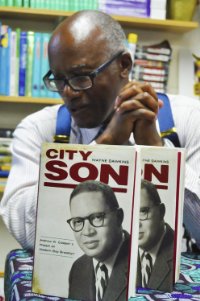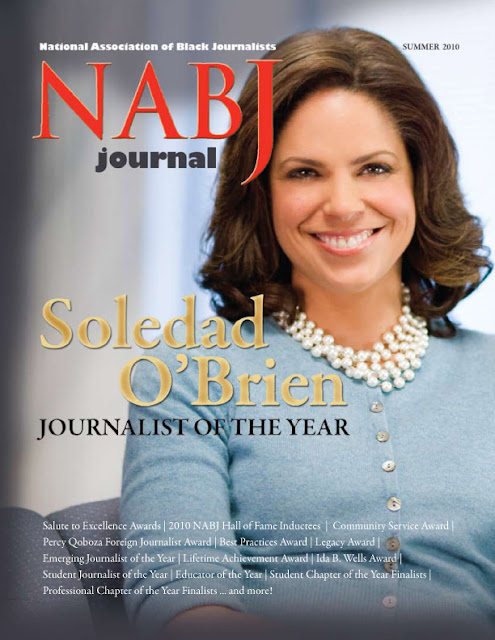I am a communicator, by profession. Some might even say that I am a natural communicator. I also work with a lot of journalists. In my opinion, there are not enough journalists of color; but the situation in the United States is improving, although slowly – especially because of organizations such as the National Association of Black Journalists (NABJ).
In 1975, the situation was not good at all. Black journalists were few and far between and
most were, at the very least, facing detractors and inhibitors. At the most, they were being outwardly
persecuted, by colleagues, as well as the public. Even the Nixon Administration tried to
intimidate NY Times columnist, Earl Caldwell, who wrote articles about The
Black Panthers.
 |
| Earl Caldwell |
Less than ten years earlier, the Kerner Commission
Report of 1968 (reporting on civil disorders during an extremely volatile time
in history), noted that much of the news media maintained segregated newsrooms,
while simultaneously exposing segregation and discrimination in other institutions.
The Report highlighted that, at that
time, less than 5% of people employed in the news media were Black.
Attempts had been made to organize in the 60s; but,
despite the desire by the Boston, Philadelphia, Baltimore and Los Angeles
regional groups, they did not come to fruition, primarily because potential
founders argued over the name of the group (utilizing ‘Negro’ vs.
‘Black’). However, a group called Black
Perspectives, was formed in 1967, which aimed to present a Black viewpoint that
would make mainstream news coverage multi-dimensional, as well as
accurate. Perhaps, unplanned, Black
Perspectives laid the foundations for the NABJ.
Finally, in December 1975, forty-four journalists
decided to organize themselves, nationally.
The
Founding 44 ranged from working at, for example, the LA Times, US News &
World Report, Ebony Magazine, NBC, Philadelphia Inquirer, Africa Journal,
Chicago Tribune, NPR, Washington Post, New Haven Register and NY Times.
 |
| 41 of the 44 NABJ Founders |
 |
| The Founding 44's Signatures |
Paul
Brock, news director of MHUR radio, in Washington DC, was the founding executive
director; but Philadelphia Daily News journalist, Charles (Chuck)
Sumner Stone was the driving force behind the launch and became NABJ’s first president. He was highly respected and had a mystique
about him that drew a quiet awe from everyone, including fellow journalists,
criminals, the police, businessmen and politicians. Born in 1924, in Hartford, Connecticut, he
attended the esteemed, Wesleyan University, being the only Black person in his
class. His bold. Commencement speech was
entitled, "America’s broken promises to Black people." One of his earlier
journalist jobs was as African-American Congressman, Adam Clayton Powell, Jr.’s, Press Secretary, in Harlem.
 |
| Chuck Stone working in his office |
 |
| Adam Clayton Powell, Jr. w/Malcolm X |
In the early days of the NABJ, little was
documented because the founders were struggling to successfully manage their
‘day jobs’ while trying to keep NABJ afloat. However, thankfully, journalist,
Wayne Dawkins, interviewed many of them, and wrote a critically acclaimed book
in 1993, entitled, Black Journalists, The NABJ Story. Wayne is a Columbia University graduate and
the historian of the NABJ. He currently teaches journalism & communications
at Hampton University.
 |
| Wayne Dawkins |
Indeed, keeping the organization running, at first,
was proving to be difficult. NABJ’s
first bank balance was a meager $300.00 from first attendance membership dues.
So, the founders decided to host a fundraiser, with
renowned author, James Baldwin, as keynote speaker. As James’s flight was
landing, they still did not have enough money to pay for his hotel. So, they begged and borrowed from the
Founders’ pockets to cover it. To their dismay, James had arrived with an
entourage of three – all expecting accommodation, as well. Somehow, they scraped up the additional
budget needed. The event was oversold,
resulting in the much-needed funds to fill their coffers.
The NABJ held its
first convention less than a year later at Texas Southern University,
which at the time, had recently established the second school of communications
at an HBCU, in the nation. It now hosts the country’s largest journalism convention
and career fair each Summer with plenary sessions and workshops for career and
professional development. Recent speakers have included Liberian President,
Ellen Johnson-Sirleaf, Huffington Post Founder, Arianna Huffington, then Presidential candidate, Barack Obama, and Vice-President, Joe Biden. This year’s Convention will be held in
Orlando, Florida.
 |
| Liberian President, Ellen Johnson-Sirleaf |
 |
| Arianna Huffington |
 |
| Presidential candidate, Barack Obama |
.jpg) |
| Vice-President, Joe Biden |
NABJ bestows awards. The
organization's annual Salute to Excellence Awards honors coverage of
African-American people and subjects. Awards given include: Journalist of the
Year, Emerging Journalist and the Ida B. Wells Lifetime Achievement Award.
The Ida B. Wells Award is given to a media
executive or manager who has made outstanding efforts to make newsrooms and
news coverage more accurately reflect the diversity of the communities they
serve. The award is named in honor of
the distinguished journalist, fearless reporter and wife of one of America’s
earliest Black publishers. Ida was "editor and proprietor" of the Memphis
Free Speech and Headlight. She told her male co-founders she would not help
launch the newspaper unless she were made "equal to them."
 |
| Ida B. Wells |
Past
honorees have included Ed Bradley, Charlayne Hunter-Gault, and this year,
Richard Prince, columnist for the Maynard Institute for Journalism Education. He
was honored last month at NABJ’s Hall of Fame Induction Ceremony at the Newseum
in Washington, D. C.
 |
| Richard Prince |
Richard has been recognized for his efforts championing diversity in journalism. His
devotion to equity and justice in journalism began early. In 1972, Richard and
six other African-American journalists, then working at The Washington Post,
filed a grievance with U.S. Equal Employment Opportunity Commission (EEOC). The
group, which came to be known as the Metro Seven, alleged that the paper failed
to provide Black journalists with equal opportunity in assignments and
promotion.
 |
| Metro Seven w/others |
The NABJ
Hall of Fame inducts 6 African-American journalists each year.
One of the
more recent inductees was Gwen Ifill. Click here to see her induction video (note:
video actually ends at 2:35)
Students
greatly benefit from the NABJ, as well. The organization distributes more than
$100,000, annually, in scholarships to African-American college journalism
students, places 14-16 students at paid internships and sponsors short courses
for students at Historically Black Colleges and Universities. To help fund
those scholarships, NABJ hosts annual fundraisers such as golf tournaments and
film festivals.
 |
| NABJ Students' Multimedia Project |
The NABJ Media Institute provides professional
development and technical training for Black journalists and students at venues
across the country; and there are task forces for different expertise or
interest areas, such as sports, world affairs and politics. A quarterly journal
is also produced for its members.
NABJ is headquartered on the campus of the
University of Maryland-College Park and currently boasts 4,100 members. It is now the largest organization of
journalists of color, in the United States.
 |
| NABJ Headquarters |
They’ve come a long way; but in my mind, their work
won’t be truly done until there is no need for the NABJ to exist.
Sources: Wikipedia, NABJ, Google
images, YouTube, Wayne Dawkins: Black Journalists, The Story of NABJ














No comments:
Post a Comment